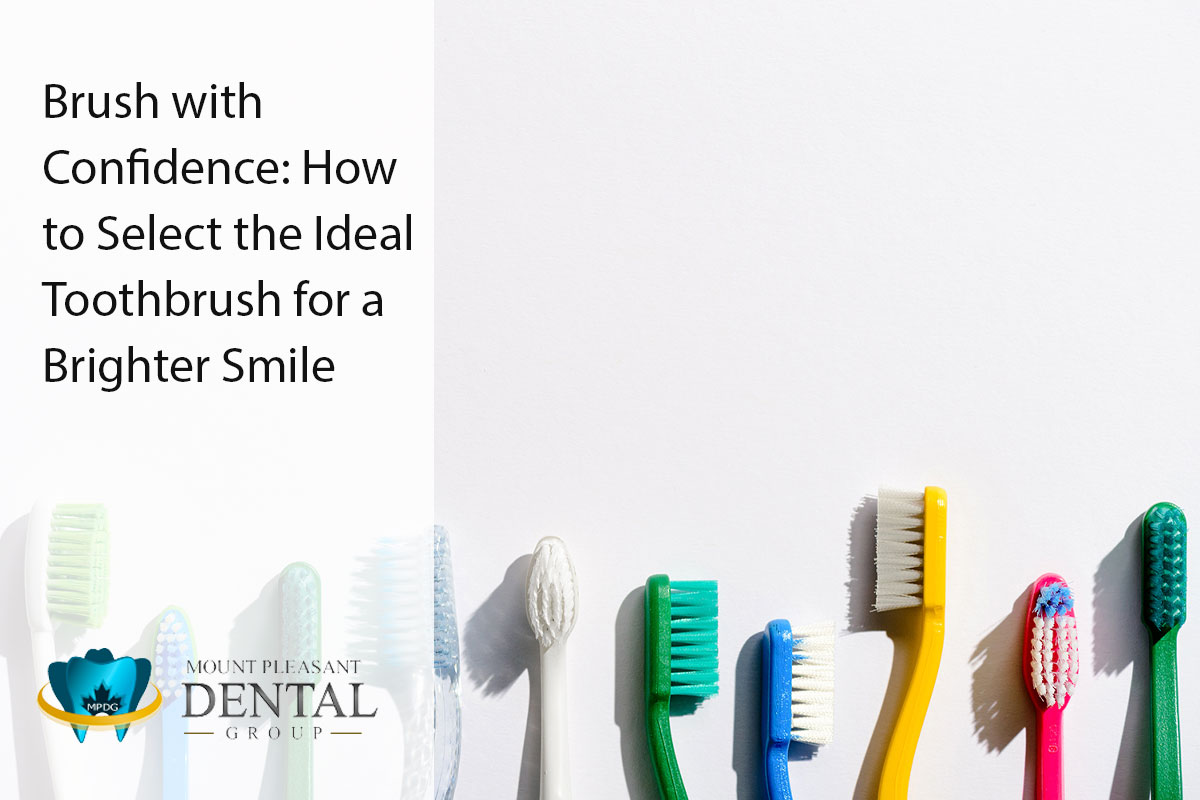
Brush with Confidence: How to Select the Ideal Toothbrush for a Brighter Smile
Feel uncertain about your smile? No worries; we’re here to help you achieve a brighter smile. This article guides you in choosing the perfect toothbrush, providing all the necessary information. Let’s start this journey together.
Importance of choosing the right toothbrush
Choosing the right toothbrush is crucial for maintaining oral hygiene. It ensures effective plaque removal, which is vital for preventing tooth decay and gum disease. The right toothbrush promotes gum health by using soft bristles and proper head size and shape to prevent damage or irritation. Moreover, having the right toothbrush enhances your overall oral hygiene routine, encouraging regular and thorough brushing for improved oral health and a brighter smile.
Types of toothbrushes
When choosing a toothbrush, you’ll decide between manual and electric options, each with its unique advantages.- Manual: Manual toothbrushes are the traditional choice, offering a handle and bristle head in various shapes and sizes. They’re budget-friendly, readily available, and great for those who prefer a simple oral care routine without the need for batteries or charging.
- Electric: Electric toothbrushes have become popular due to their advanced features and superior plaque removal capabilities. They use rotating or vibrating bristles to provide a more thorough clean, reaching difficult-to-access areas that manual toothbrushes might miss. Electric toothbrushes are also recommended for individuals with limited dexterity, making it easier for those with conditions like arthritis to maintain good oral health.
Bristle options
Once you’ve chosen your toothbrush type, the next step is selecting the right bristle type. Toothbrush bristles typically come in three main varieties: soft, medium, and hard.- Soft bristles are recommended by dentists for most people, particularly those with sensitive teeth or gums. They effectively remove plaque without causing harm and reduce the risk of gum recession and enamel abrasion when used gently.
- Medium bristles, slightly firmer than soft ones, may be suitable for those who prefer a firmer feel or have healthy teeth and gums. However, it’s important to employ a gentle brushing technique to prevent potential damage.
- Hard bristles are generally not recommended due to their potential abrasiveness. Despite the appearance of increased effectiveness, they can result in tooth enamel wear, heightened tooth sensitivity, and gum recession. In most cases, opting for soft bristles is a prudent choice, unless advised otherwise by your dentist, as they are a safe, gentle, and effective option for maintaining excellent oral hygiene.
Toothbrush handle options
A toothbrush handle that’s comfortable and dependable is essential for effective and accident-free teeth brushing. There are two types of handles to consider: ergonomic and non slip grip.
- Ergonomic Design: Deliberate on an ergonomic toothbrush handle, painstakingly designed with the contours of your hand in mind. It offers a cozy grip, and it minimizes strain on your wrist and fingers. This feature is especially beneficial for individuals with conditions such as arthritis.
- Non-Slip Grip: Another vital aspect to look for in a toothbrush handle is a non-slip grip. This ensures that the toothbrush remains firmly in your hand while brushing, enhancing your control and precision. It is particularly crucial with manual toothbrushes to prevent potential accidents and injuries.
Special Features
Certain toothbrushes offer extra features that can elevate your oral hygiene routine and address specific dental concerns. These added elements deliver supplementary benefits:- Tongue cleaner: Many toothbrushes now integrate a tongue cleaner on the back of the brush head, effectively eliminating bacteria and food particles from your tongue’s surface, contributing to fresher breath and improved oral hygiene.
- Gum massager: Toothbrushes with small rubber protrusions on the head offer gentle gum massages during brushing, promoting gum health, stimulating blood circulation, and providing a soothing experience.
- Additional features: Keep an eye out for built-in timers to ensure two-minute brushing, pressure sensors that caution against excessive force, and replaceable brush heads for electric toothbrushes.
Conclusion
Selecting the right toothbrush is crucial for a brighter smile and optimal oral health. Consider factors like type, bristle type, handle design, and special features. Prioritize personal comfort and consult your dentist for specific needs. Remember to replace your toothbrush every 3-4 months, clean it after each use, and maintain a consistent oral hygiene routine. Choose a toothbrush with confidence and unlock the potential for a brighter smile while taking control of your oral health. Don’t forget to visit the dentist regularly to maintain optimal oral health. Book an appointment today. Call Mount Pleasant Dental Group at (604) 559-9955.



